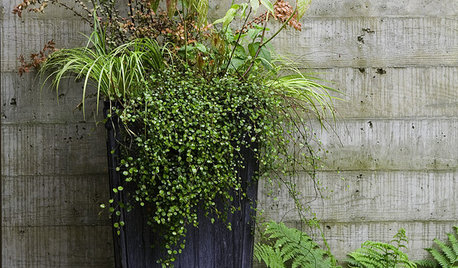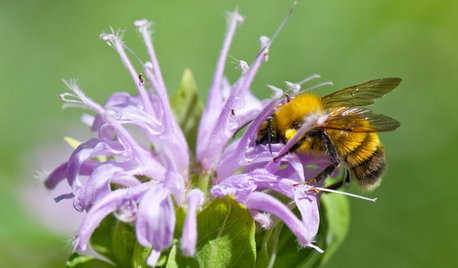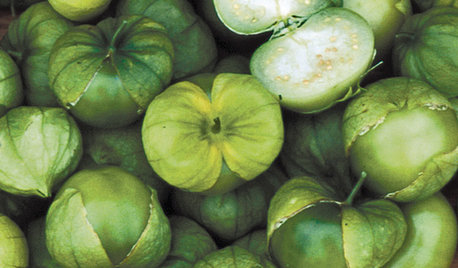Tomato support group
droogie6655321
17 years ago
Related Stories

EDIBLE GARDENSSummer Crops: How to Grow Tomatoes
Plant tomato seedlings in spring for one of the best tastes of summer, fresh from your backyard
Full Story
GARDENING GUIDESThe Secret Formula for Grouping Plants in a Pot
Designing a gorgeous container garden is easy once you know this simple rule of thumb for composition
Full Story
BATHROOM DESIGNBathroom Safety Features That Support Your Style
'Safety first' doesn't mean style comes in second with bathroom grab bars, shower seats and more designed for the modern home
Full Story
GARDENING GUIDESSupport Bumblebees by Providing Forage in 3 Seasons
Bumblebees are fascinating and fun to observe foraging in gardens. Find out how to create a buffet for these fuzzy, charismatic bees
Full Story
LIVING ROOMSRoom of the Day: Custom Storage Supports a Minimalist Living Room
Smart storage and furniture arrangement keep this space uncluttered while packing in all the function the family needs
Full Story
BATHROOM DESIGNExpert Talk: Frameless Showers Get Show of Support
Professional designers explain how frameless shower doors boosted the look or function of 12 bathrooms
Full Story
NATIVE PLANTSPlant These Fall-Flowering Natives in Early Summer for Pollinator Love
These 3 groups of plants will support masses of beneficial insects come autumn
Full Story
HEALTHY HOME12 Ways to Set Up Your Kitchen for Healthy Eating
Making smart food choices is easier when your kitchen is part of your support team
Full Story
FARM YOUR YARDHouzz Call: Home Farmers, Show Us Your Edible Gardens
We want to see where your tomatoes, summer squashes and beautiful berries are growing this summer
Full Story
SUMMER FRUITS AND VEGETABLESSummer Crops: How to Grow Tomatillos
Grow this Mexican native for the freshest salsa verde — and for fewer problems than its tomato cousins
Full Story0
Sponsored



merryheart
droogie6655321Original Author
Related Discussions
black walnut support group
Q
Do any of you have a support group like this?
Q
Corona support group
Q
Video conference support group for all you trapped at home
Q
Okiedawn OK Zone 7
droogie6655321Original Author
merryheart
countrysmiths
okcdan
Okiedawn OK Zone 7
droogie6655321Original Author
susanlynne48
Okiedawn OK Zone 7
sheepie58
Okiedawn OK Zone 7
skeetermagnet
dragonladytoo
susanlynne48
oakleif
sheepie58
soonergrandmom
littledog
Okiedawn OK Zone 7
susanlynne48
Okiedawn OK Zone 7
susanlynne48
Okiedawn OK Zone 7
susanlynne48
Okiedawn OK Zone 7
susanlynne48
Okiedawn OK Zone 7
susanlynne48
Okiedawn OK Zone 7
susanlynne48
Okiedawn OK Zone 7
droogie6655321Original Author
hank1949
susanlynne48
Okiedawn OK Zone 7
susanlynne48
Okiedawn OK Zone 7
maupin
telliott1344